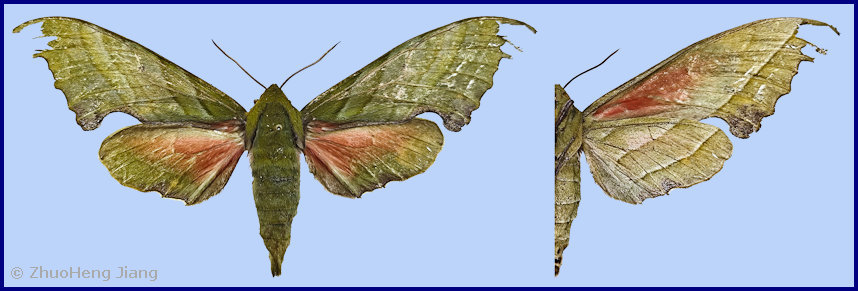
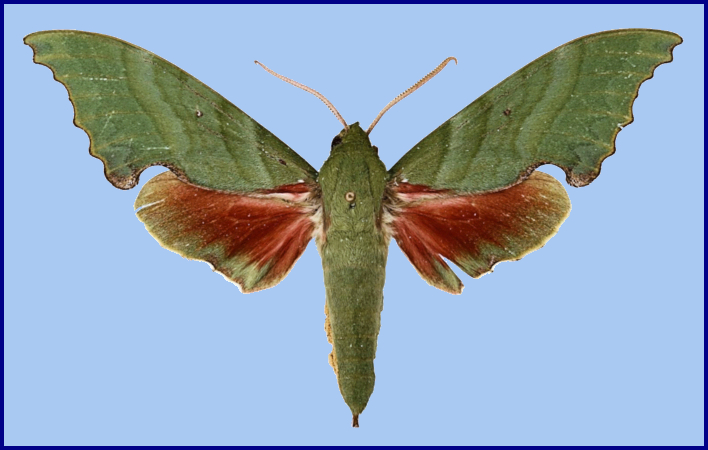
Ambulyx floralis Butler, 1876, Trans. Zool. Soc. Lond. 9(19): 639. Type locality: [India, West Bengal,] Darjeeling.
Synonym. Triptogon florale Butler, 1881.
Synonym. Cypa floralis Hampson, 1892.
Wingspan: 114 mm. Forewing elongate, slightly falcate, heavily dentate along the outer margin, with the upperside cryptic pattern consisting of distinct alternate light and dark diagonal lines (some may be faint), which are outlined in light brown, silver or a shining bronzy clay-colour. The apical half of costal area, the central and internodiscal areas washed with green/bronzy-green of varying amounts, which can be quite extensive or very minimal; subbasal area dusky olivaceous, limited externally by an oblique olive line, a second parallel line crossing the wing over the base of the first median branch. There are three ill-defined oblique waved lines, the outermost, undulating, crossing the disk. Between the second and third a very indistinct diffused sinuous line; inner margin and the lines as they approach it blackish. There is a white-pupilled rounded black spot on the lower discocellular area; a tuft of rose-red hairs at the base of inner margin. Hindwing with the basal two thirds rose-red; costal area whitish; external third washed with green, especially towards apex, brownish towards the anal border; fringe for the most part white. The underside of the wings are much paler, testaceous, washed with pale green. Forewings with the internodiscoidal area rose-red; costal area greenish; a transverse brown litura beyond the cell; a transverse oblique, nearly straight white-bordered olive discal line; a zigzag line nearer to the outer margin, becoming black towards inner margin; a sub- marginal series of spots, only distinct and blackish at the external angle. The hindwing undersides are crossed by three parallel white-bordered olive lines; a squamose brown submarginal spot near anal angle. Head and collar bronze-green, tegule and abdomen olive washed with green, but the amount of green variable. Antenne testaceous/pink, pectinations brown. Anterior tibiae and tarsi above brown; body underside whitish-brown; palpi, pectus, and legs slightly dusky. Female much larger, altogether less lively in colour, the green colouring less perceptible (Butler, 1876).
In the male genitalia, uncus elongate and tongue-shaped, with a finely bilobed terminal section. Gnathos absent. Sacculus broad, sclerotized apically, bearing a long, curved, ventral claw; juxta leaf-shaped. Phallus short and straight, with a terminal lobe that features a circular sclerite edged with sharp teeth (Jiang, Xu, Lin, Liu, Wang & Hu, 2025).
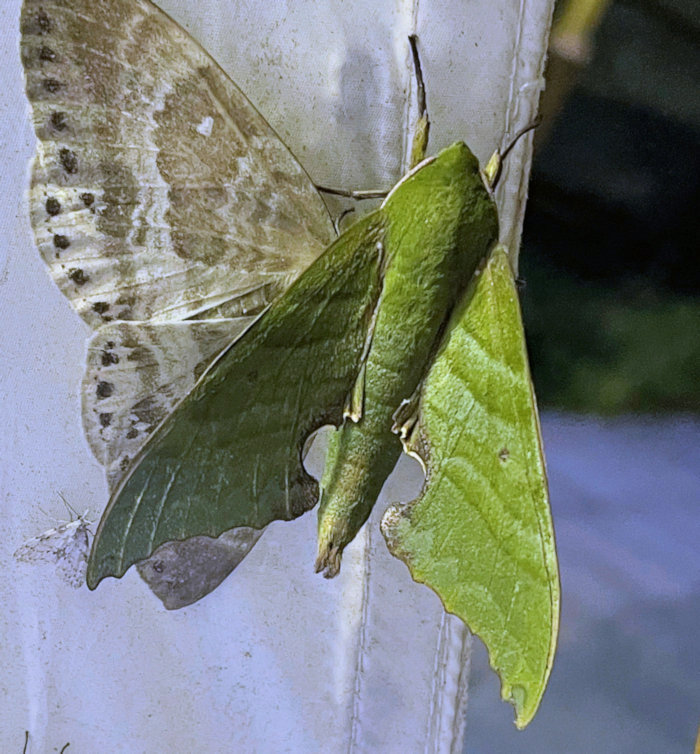
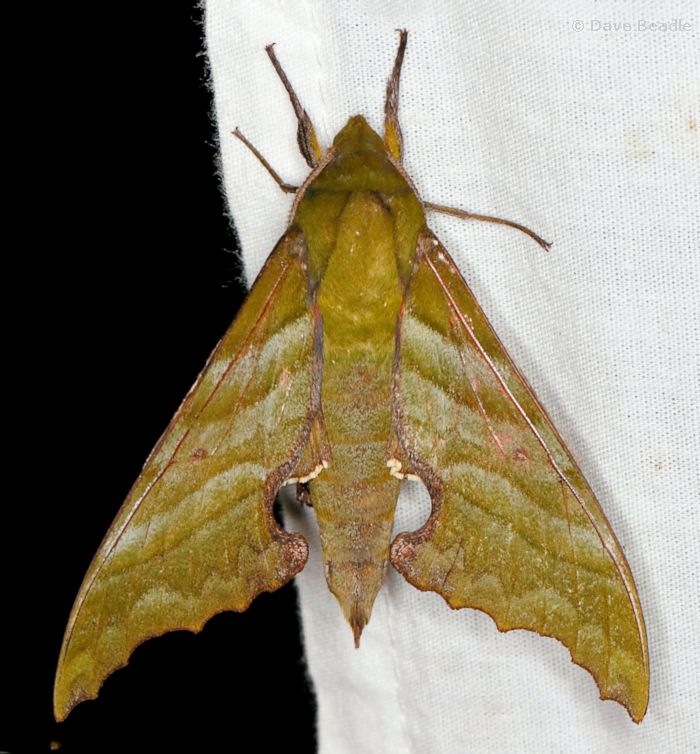
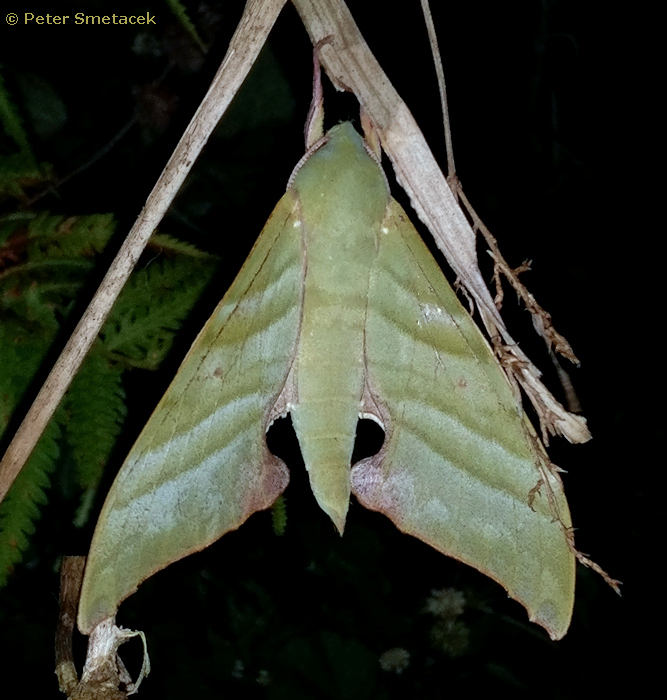
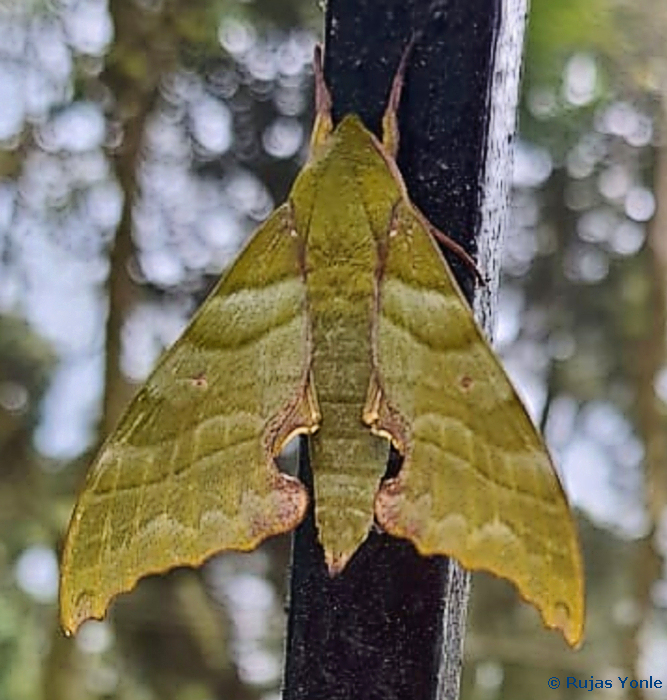
Unknown.

India: 23.iii (West Bengal); 1-5.v (Arunachal Pradesh); 18.vi (West Bengal); 12.xi.2020 (Arunachal Pradesh). China: 2-27.vi (Xizang/Tibet).
OVUM: Unknown.
LARVA: Full-fed 80 mm. Green, covered with whitish tubercles, with a darker green dorsal line bearing a series of short orange-coloured spines from head to horn. On segments 2 to 5 there is a yellowish dorsolateral streak, with a small white spiracular spot on segment 5 edged with black and with a disc of yellow near it. Oblique lateral stripes violet edged with pale greenish-yellow below on segments 5 to 11; anal flap covered with orange-coloured spines. There is a white cheek stripe on each side of the head, which is basically green, triangular, and produced upwards; horn long, nearly straight, rough, green with the tip black; legs and claspers pale yellow (Fellowes-Manson, 1906).
PUPA: 54 mm. Cylindrical, deep reddish-brown with a purplish suffusion, the antennae, tongue, legs and wings being tightly compressed into and flush with the body; surface slightly granulated. Cremaster stout, with a lump on the dorsal surface (Fellowes-Manson, 1906).
Larval hostplants. Recorded from Acer campbellii in India (Fellowes-Manson, 1906).
Unknown.
China: Xizang/Tibet (Zhêntang/Chentang, Dinggyê County; Biebeng Township, Motuo/Metok/Mêdog/Pemako County, 1950m).
So far, only known from Nepal, Bhutan (Irungbam & Irungbam, 2019), southern China (Xizang/Tibet), and northern India (Sikkim; West Bengal; Arunachal Pradesh).
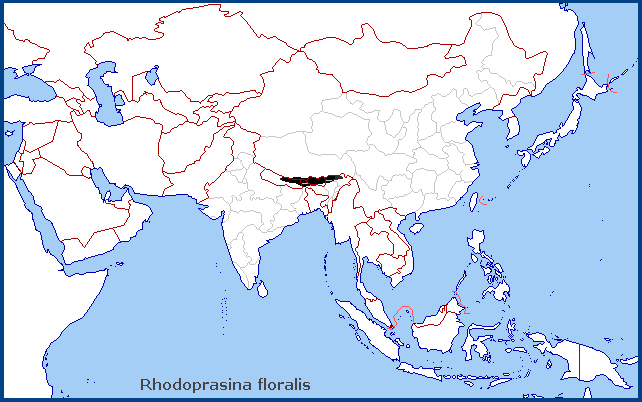
 Return to Sphingidae of the Eastern Palaearctic species list
Return to Sphingidae of the Eastern Palaearctic species list